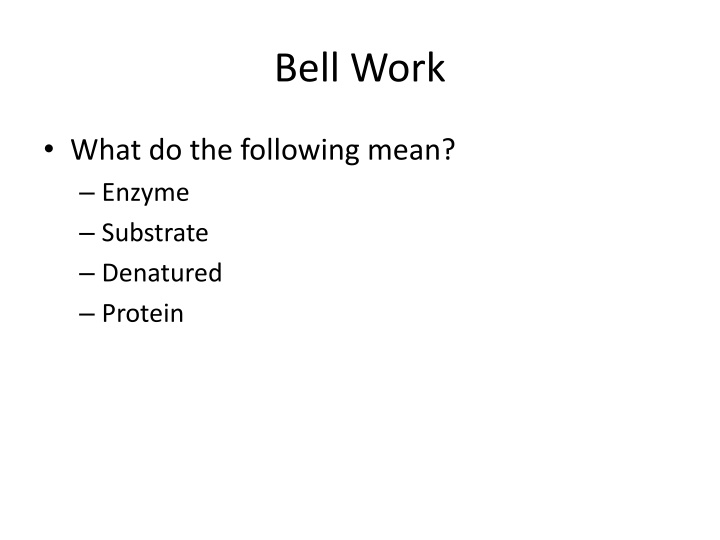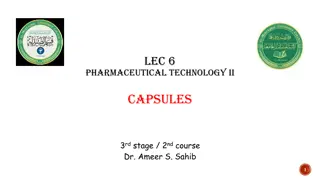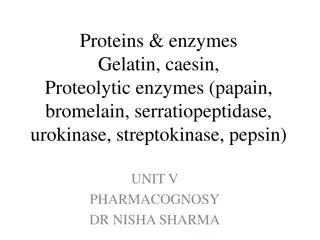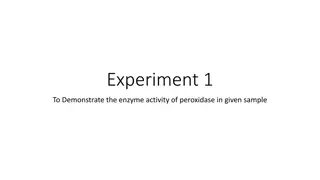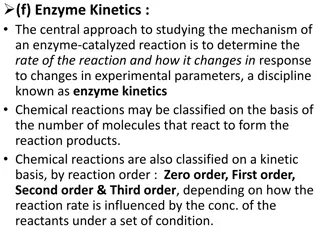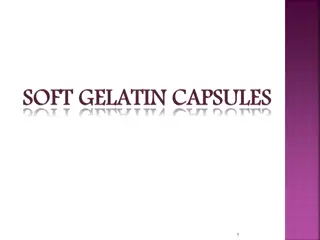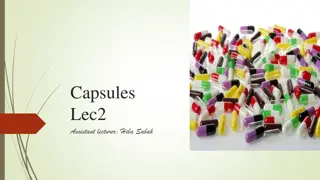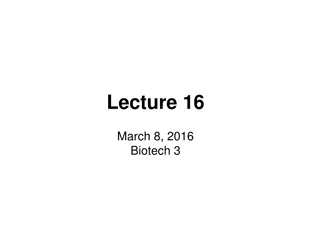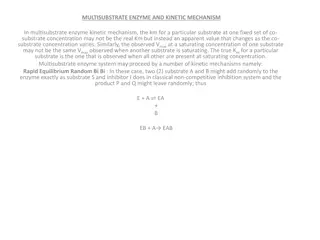Investigating the Impact of Pineapple Enzyme Bromelain on Gelatin and Pasteurization Process
Explore the effects of pineapple enzyme bromelain on gelatin and how pasteurization can alter its effectiveness in this lab experiment. Discover the different outcomes when using fresh versus canned pineapple and formulate hypotheses to guide the investigation. Follow step-by-step procedures to test the enzyme's influence on protein gelatin under varying conditions.
Download Presentation

Please find below an Image/Link to download the presentation.
The content on the website is provided AS IS for your information and personal use only. It may not be sold, licensed, or shared on other websites without obtaining consent from the author.If you encounter any issues during the download, it is possible that the publisher has removed the file from their server.
You are allowed to download the files provided on this website for personal or commercial use, subject to the condition that they are used lawfully. All files are the property of their respective owners.
The content on the website is provided AS IS for your information and personal use only. It may not be sold, licensed, or shared on other websites without obtaining consent from the author.
E N D
Presentation Transcript
Bell Work What do the following mean? Enzyme Substrate Denatured Protein
Background Jell-O has some very unique qualities. Changes from a hot liquid into a gel form we are all familiar with. How does this happen? The large, string like protein molecules of gelatin wiggle around in the hot water solution. As the gelatin mixture begins to cool, the protein strands have less and less energy to wiggle, until eventually they eventually bond together forming what we know as Jell-O.
Background The enzymes in some tropical fruits can break down protein. Meat tenderizers have the enzyme, papain, which breaks down some of the tissues in the meat. We use it to soften up a tough piece of meat. The papain comes from the papaya fruit. Pineapple has an enzyme called bromelain that also breaks down proteins.
Background Pasteurization Heat-treatment process discovered by French scientist Louis Pastuer in the 1860 s He discovered that heating food to about 57oC (135oF) for a few minutes destroys bacteria and other microorganisms in foods and beverages. This process is used widely today in the food industry for canned and bottled products.
Purpose of Lab To examine the effect of the enzyme bromelain on Jell-O To discover how the process of pasteurization can impact the effectiveness of bromelain
Questions What will happen to the protein gelatin when I add pineapple? Will fresh vs. canned pineapple make a difference?
Hypothesis If,____________ then,________________. (Make a hypothesis statement for both fresh and canned pineapple)
Materials Three Test Tubes Hot Gelatin Fresh Pineapple Canned Pineapple Ice Water Bath
Procedure l. Label your test tubes (A,B,C) 2. Cut a few equal sized pieces of fresh and canned pineapple. (The pieces should be just small enough to slide into your tubes.) 3. Place the different pieces of pineapple into the first two corresponding tubes. (A-Fresh, B-Canned, C-Only Jell-O) 4. Pour small amount of liquid gelatin into each of the tubes. (Enough to cover the pineapple - 1/4 full) 5. Mix the contents of the tubes by rolling them upright between the palms of your hands.
Procedure 6. Place all three test tubes into the ice water bath. 7. Every few minutes check to see if the gelatin is setting in the tubes. When test tube #3 has gelled firmly, you can remove all the tubes and compare the products. 8. Copy the data table below into your journal and record your observations/descriptions of the Jell-O.
Data Table Test Tube #1 Jell-O + Fresh Pineapple Test Tube #2 Jell-O + Canned Pineapple Test Tube #3 Jell-O
Discussion Questions 1. Were your hypotheses correct? 2. Why did test tube #3 contain only gelatin? 3. What is bromelain? 4. What was the substrate that the enzyme bromelain acted on? 5. Was there any difference between the fresh and the canned pineapple results? Why do you think this was the case? 6. What does it mean to say that the bromelain was denatured during the canning process? What did this cause to happen? 7. Would it be a good idea to add pineapple to your Jell- O? If so, which type of pineapple? Why?
Pineapple Post Lab What was the control group in this lab? Why did the Jell-O with the fresh pineapple not gel? Will bromelain (the enzyme in pineapples) break down carbohydrates? Why/Why not? What is the function of enzymes in our bodies? What does denatured mean when talking about an enzyme?
What you should have observed You Tube video (similar but not exactly the same)
